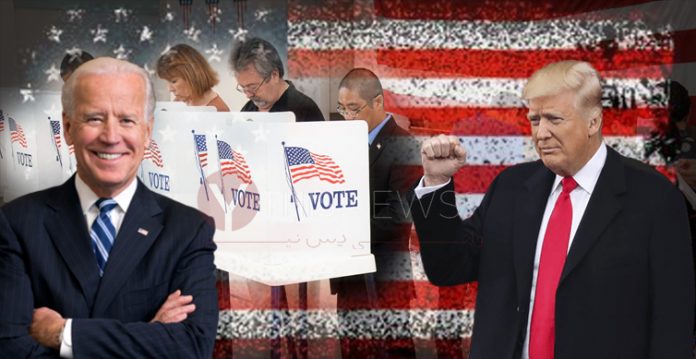As far as TV advertisement burn through alone, the Joe Biden versus Donald Trump battle is boiling down to about six landmark states while the spending gap among digital and TV is quickly diminishing as political missions bet everything to arrive at a multi-screen, multi-generational crowd during a progressing pandemic.
Biden and Trump have already spent $500 million on Facebook and Google promotions alone, and about $1 billion on TV advertisements, as per research by the Wesleyan Media Project which tracks political advertisements in political race season.
A National Public Radio (NPR) investigation of the Biden and Trump campaign’s money out shows that more than $700 million has been spent on TV advertisement appointments in 14 states and more than $8 of each $10 spent is going to promotion purchases in Florida, Pennsylvania, North Carolina, Michigan, Wisconsin and Arizona.
A similar report says the Biden-Harris crusade is spending very nearly 90 percent of their cash in these six states, while Trump is at a shade under 80 percent over similar states.
In their push to contact more youthful crowds who aren’t sitting in front of the TV, the Biden and Trump crusades are siphoning enormous cash into computerized promoting even as TV’s influence in political race season is kicking Judgment day expectations about its part during political pinnacle minutes.
“One big shift that we’ve seen over time that has certainly accelerated in 2020 is that young people are not watching television. They’re certainly not watching broadcast television. Everything is online or streaming,” Dr Travis Ridout, Thomas S. Foley a Distinguished Professor of the Government and Policy and Director of the School of Politics, Philosophy, and Public Affairs at Washington State University told to IANS.
“And so if campaigns want to talk to younger people, then they can’t just rely upon advertising on broadcast television, and so that’s why you’ve seen some of those big increases in digital advertising. That’s where you have to reach young people.”
A lot of promotion spending keeps on streaming into broadcast TV and greater pieces towards satellite TV as well, for its better focusing on abilities.
“There’s just more content than ever, both on TV and on digital,” Dr. Michael Franz and Dr. Travis Ridout, co-heads of the Wesleyan Media Project, said during a media instructions.
A lot of all-out promotion spending is climbing consistently. From around one percent in 2010, it’s ascended to 14 per cent by 2016 and 20 percent in 2018. Early gauges by the Wesleyan Media Project peg advanced’s offer at around 27 percent of advertisement spending in the 2020 race.
Negativity in advertisements has been happening on display. Dark subjects and assault advertisements are moving upward, both as a portion of every negative promotion and cynicism as a level of notices in those advertisements.
What’s additionally striking in the Wesleyan information is the volume aggregates of the universe of political promotions and assault advertisements specifically. Around 40 percent, more advertisements are on TV comparative with 2018 in legislative races.
“So, digital has gone up but so has television, and so that’s one of the really interesting features of this current period we’re in. There’s more of everything.”
Regarding TV burns alone, the Wesleyan Media Project see is that Joe Biden’s mission has a “huge bit of leeway” over the Trump lobby. This examination depends on advertisement spends over America’s 210 media markets.
The positive turn on that for the Trump lobby is that they’re truly focusing on explicit citizen gatherings and come to Election Day those gatherings will accompany them. The negative turn is they’re conveying a lot of gathering pledges messages since they frantically need cash to pay for TV advertisements.







